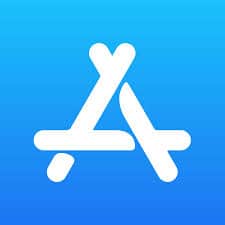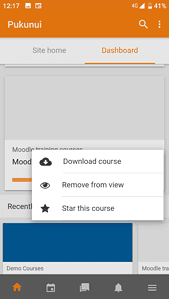Which devices do you prefer to use to access Moodle? Through your smartphone or tablet? To access Moodle on a mobile device, you have two options. The first, you can access your Moodle LMS via its website. Simply go to your phone’s browser, type in the Moodle URL. The second one, you can install and use the Moodle Mobile App. Each approach has its pros and cons and in this blog post we’ll take a look at them.
Current Moodle Mobile App version
Moodle Mobile version 2.0 was released on 31 July 2015. The latest version, 4.1.1 was released on 28th February 2023 inline with the latest version of the Moodle software. This app has been used widely by both learners and educators to provide convenient access to their Moodle installation. In addition to its core features, Moodle Mobile supports several of the most popular moodle plugins, enhancing the user experience and functionality. These plugins allow for customized learning paths, interactive quizzes, and seamless integration with various educational tools. As a result, the app remains a vital resource for users seeking to maximize their online learning experience.
How can you get the mobile app?
Users can access Moodle on a smartphone, tablet or even phablet. They can also access Moodle on an iPad too. In order to get the application, you will need to go to either the App Store or Google play store to install it on to your devices. You might even have a custom branded version that you download from your own institution’s app store.
What features you can access using the mobile app?
The app has several great features that you can use to learn wherever, and whenever you are. With these features, you can access the course content of your choice easily. You don’t have to be online to access or browse the content. You can do that even when you are offline too. By downloading the courses into your mobile devices, you can access it anytime anywhere without having an internet connection. This feature beats accessing Moodle via its website, which can only happen when you’re online.
The Moodle Mobile application also allows you to connect with other course participants. It makes it easy for you or other learners and educators to search, find and message whomever they want in Moodle. Obviously, the person you search for has to be a member of the course too. Additionally, the Moodle Mobile application enhances collaboration through its integrated features, making it a preferred choice for many educational settings. While Microsoft Teams offers robust communication tools, the moodle advantages over microsoft teams include specialized functionalities tailored for academic courses, such as assignment submissions and grade tracking. This focus on educational needs ensures that users can seamlessly navigate their learning environment while staying connected with peers and instructors.
It is also helps users to stay up to date. Users receive real time notifications from their courses or schedule. Users are instantly notified of message and other equally important events taking place. Other than this, the mobile app also allows users to do multiple activities from their mobile devices. One great advantage is the convenience of using your phone’s camera. Educators could set an assignment or forum requiring the learners to take photos or record a short video.
Users can:
- Upload images
- Upload videos
- Upload audio
- Upload any file
- Submit the assignment
- View teaching materials
- Send messages
In any learning experience, learners and educators alike should be able to track progress. Moodle mobile apps makes it easier to do this and it allows users to complete their tasks regardless of their location at any given time. The app allows them to take quizzes, post in any of their forums, or play SCORM Packages. Additionally, it allows them to edit Wiki pages.
What’s the advantage of accessing your Moodle via your mobile browser?
Users can also access their Moodle website on their phones or tablets. Most modern Moodle themes should be responsive, meaning that the content will rearrange to fit the smaller mobile view. Regardless of your choice, it’s good to see that Moodle has made its services available via the app and a mobile friendly website.
One advantage of accessing via the url is that if your site uses third party plugins, most likely they will not work with the app, although it it possible should the developers choose to implement it.
What are the Benefits of having a Branded Moodle App
- Avoid student frustration by making your App easy to identify and find under your institution’s name in the app stores
- Increase student engagement: Custom mobile apps achieve more downloads on average than generic third-party branded applications. An app with your branding and name is an environment your learners know and trust.
- Give your students a multi-device learning approach with consistency and continuity, giving your app the same branding and name as your VLS, LMS, or Online Campus.
- Streamlined onboarding: Your learners simply have to download your app, log in with their credentials, and directly access your Moodle environment.
If you would like us to help you to change the look and feel of the Moodle App, to make it fit with your brand, get in touch. We can customize the app’s design elements to align seamlessly with your branding, ensuring a cohesive user experience. Additionally, with the introduction of new features in Moodle 4.0, you’ll have access to enhanced functionalities that further enrich your users’ learning journey. Let us know how we can assist you in integrating these updates into your branded app.
Does Moodle still offer a free Mobile App?
Yes. Below are the details from Moodle.com.
The Moodle App offers online learning made mobile, with accessibility and offline access to cater to learners without a reliable internet connection or a desktop computer. There are four pricing plans: Each plan is designed to meet the diverse needs of institutions and individual users, ensuring flexibility and scalability. Additionally, the platform supports various features such as customization and improved user experience through moodle and wordpress integration, making it easier for educators to create engaging content. The Moodle App ultimately empowers learners to take control of their education, regardless of their circumstances.
- Free: €0 EUR/year, includes 50 active devices for push notifications, access to 2 offline courses per device per site, and limited customisation options.
- Pro: €199 EUR/year, includes 500 active devices for push notifications, access to 4 offline courses, and more customisation options.
- Premium: €499 EUR/year, includes unlimited active devices for push notifications, unlimited offline courses, and additional exclusive features. Free if hosted by a Moodle Certified Partner or MoodleCloud.
- Branded: Custom pricing, offers a fully branded app in Google Play & Apple App Store, unlimited active devices for push notifications, unlimited offline courses, and full app branding options.
All plans include access to course content and activities, in-app messaging, calendar, gradebook, and multimedia push notifications.
How else can I get a custom Moodle app?
Want to go the extra mile? If you would like us to help you to change the look and feel of the Moodle app to make it fit with your brand, get in touch. We also create custom Moodle apps. Contact our Malaysian office Pukunui Malaysia. We are excited to announce our participation in the Moodle Moot Conference Japan 2023, where we will showcase our latest innovations and custom solutions. This event will be a great opportunity for us to connect with educators and developers who are passionate about enhancing the Moodle experience. Don’t miss out on the chance to explore how we can collaborate to elevate your learning platform to new heights!




